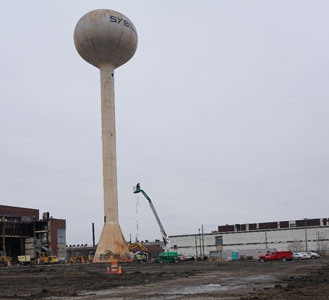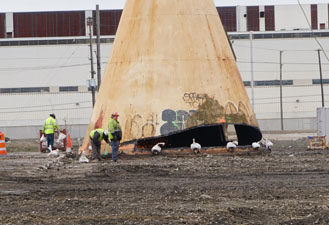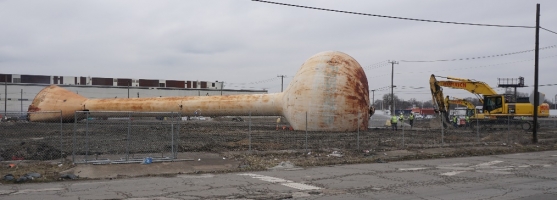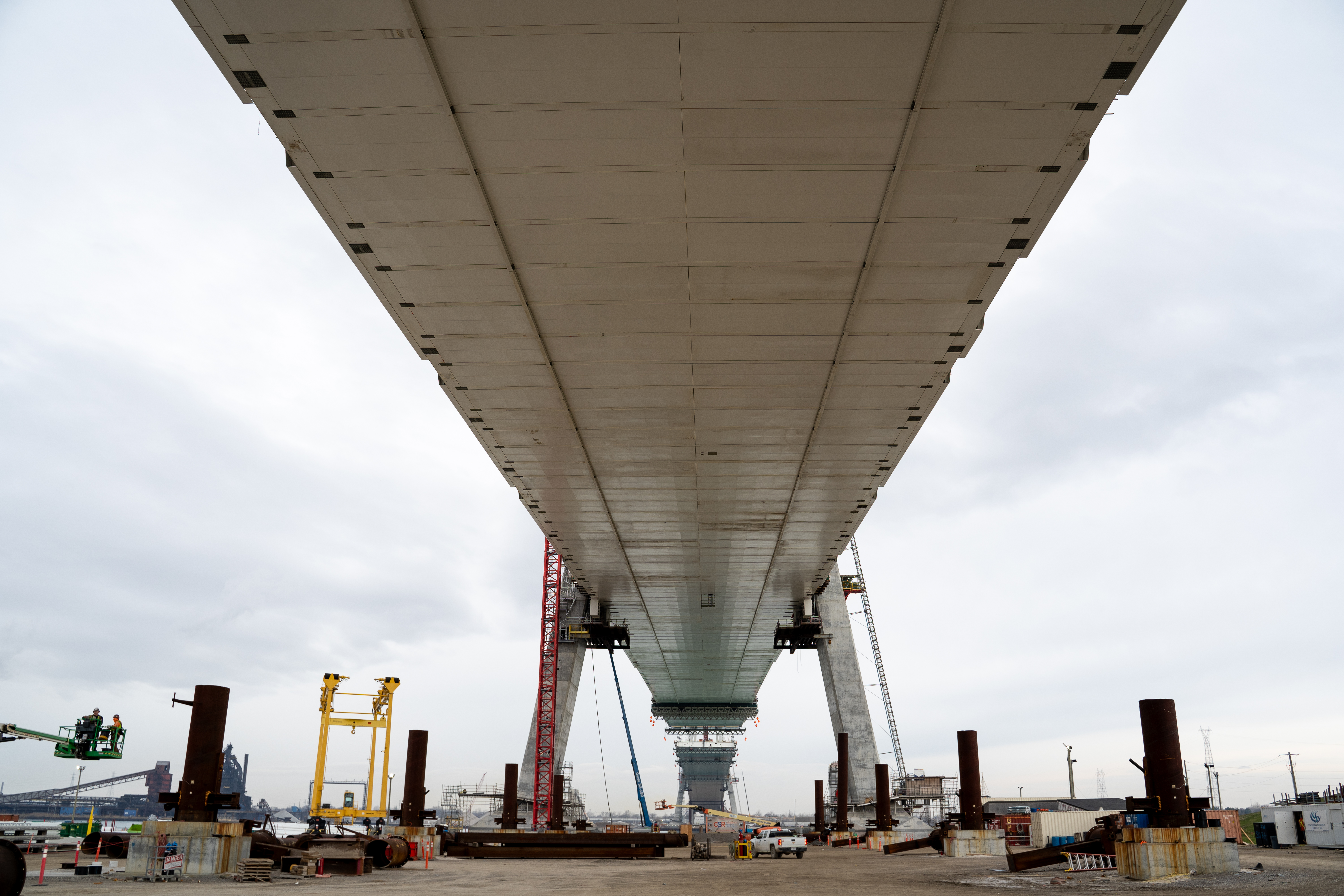
Pre-demolition

Cutting of the base using an acetylene torch

Post demolition
A 50-metre-tall (160 foot) water tower has been brought crashing back to earth thanks to careful preparation and gravity.
The tower is on a property which will eventually accommodate the ramps connecting I-75 to the US Port of Entry at the Gordie Howe International Bridge.
The water tower was built in 1967 on the site of Ternsted Manufacturing on Military Street - a division of General Motors, and was one of the highest structures within the footprint of the US Port of Entry. The approximate four-acre property had been abandoned for many years and several of the industrial structures on the site had been already removed. What remained was a derelict building and a rusty water tower.
To bring the tower to the ground, a 4-centimetre (1.5 inch) cable was looped around the middle of the tower and attached to an excavator. Two notches on opposite sides of the base of the steel tower were then cut away using an acetylene torch. The excavator then pulled the cable to topple the structure.
It takes considerable time to prepare a structure for demolition. A survey is first conducted to determine if there are environmental concerns or a potential for contamination. Existing utility services must be disconnected, materials which could become projectiles, must be first removed and neighbouring residents and businesses are notified about the demolition activity. Far more time-consuming than the demolition itself is the clean-up of the site including removal of debris and environmental remediation.
To date, a total of 235 buildings have been demolished on properties acquired by Michigan Department of Transportation (MDOT) on behalf of Windsor-Detroit Bridge Authority (WDBA) as they prepare for the start of construction of the Gordie Howe International Bridge project.
Read more about US preparatory activities completed to date.

